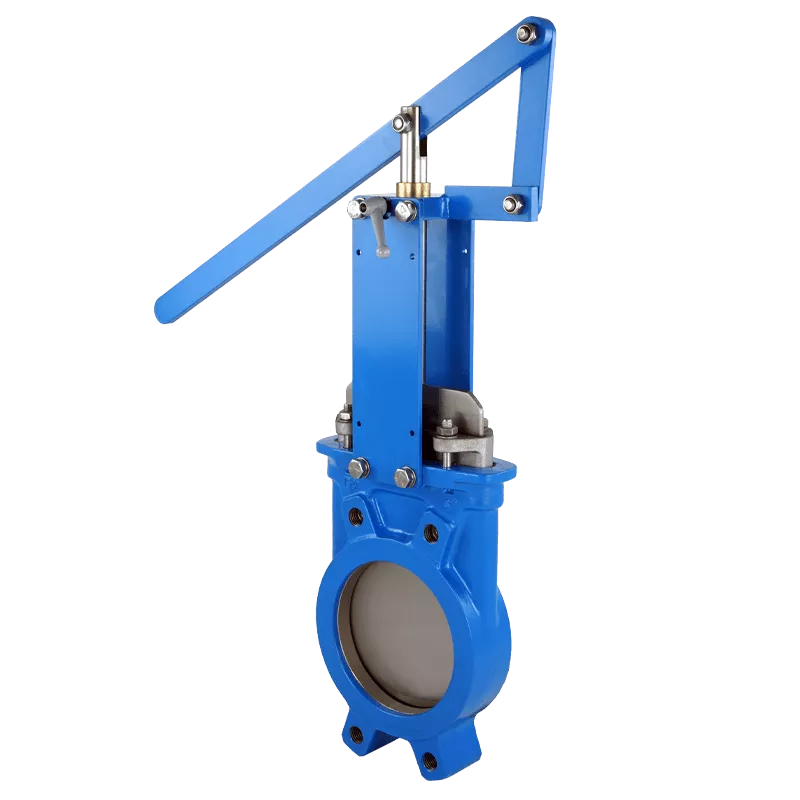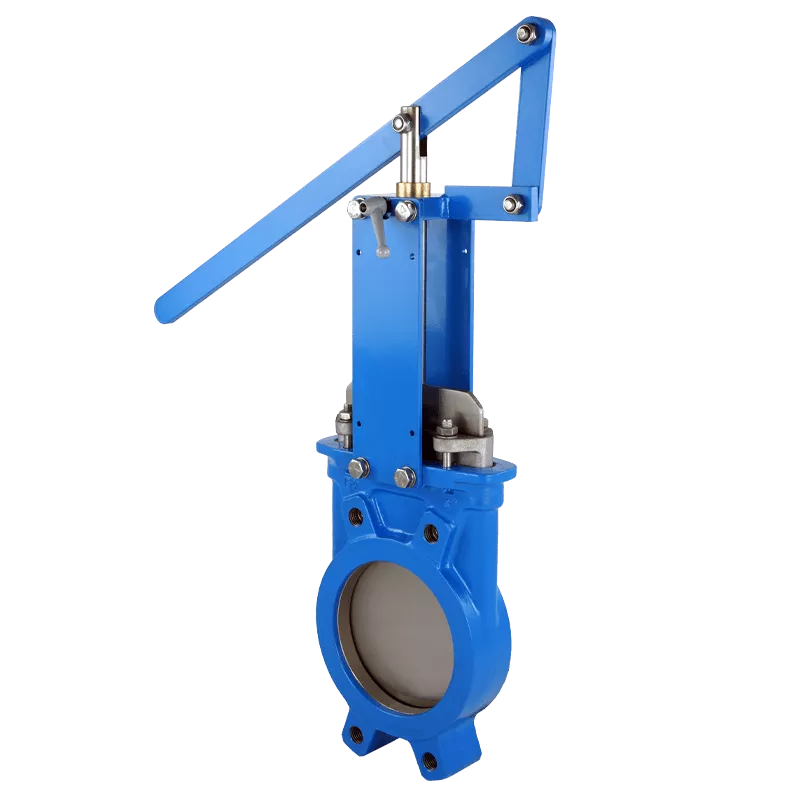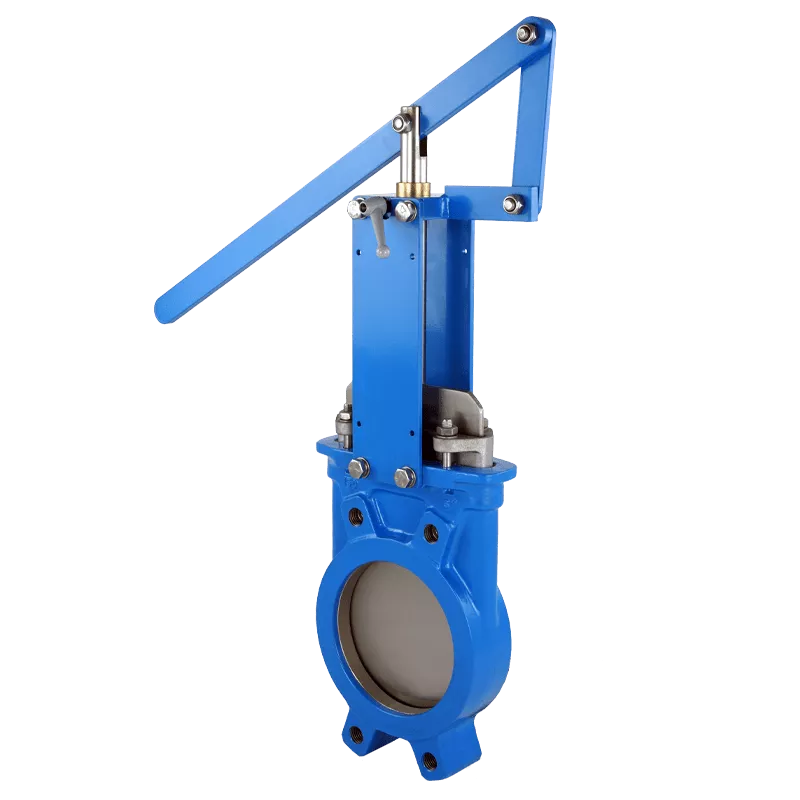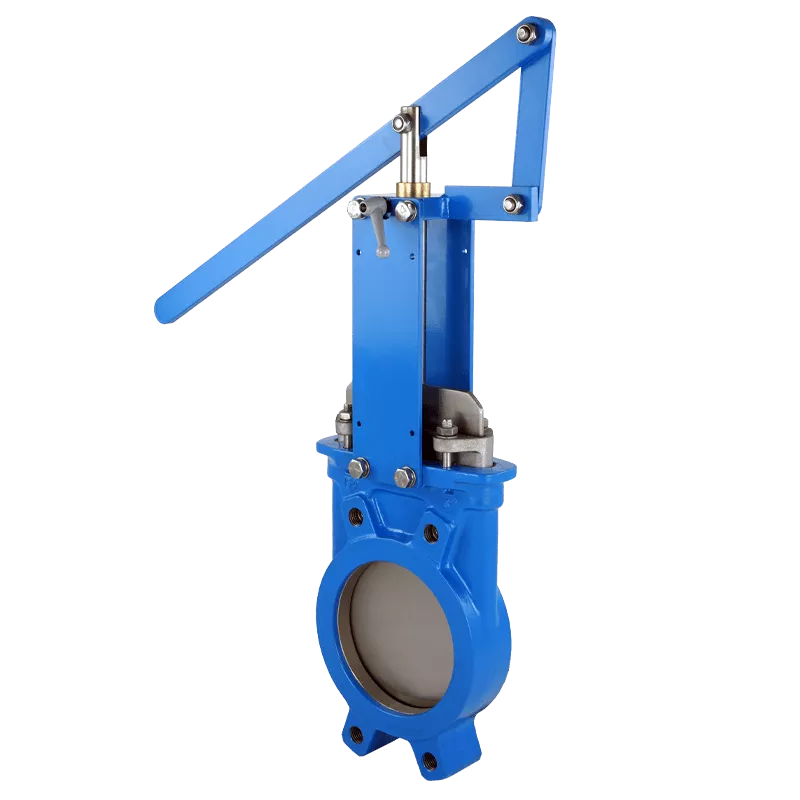Knife gate valve - Quickacting
Your reliable partner for Quick-acting knife gate valves ✓ DN50 - DN600 PN10 ✓ From stock
A quick-acting gate valve is a valve used to shut off or regulate the flow of liquid in a pipeline. It is called "quick acting" because it can be opened or closed quickly with a manual or automatic mechanism. The name "knife gate valve" comes from the fact that the valve has a blade that moves up and down in the valve body to control the flow of the liquid. When the blade is raised, it opens the flow path and allows the liquid to pass through. When the gate is lowered, it blocks the flow path and prevents the fluid from flowing. Quick-acting gate valves are widely used in various industrial applications, such as water treatment, mining and wastewater management. They are also used where quick shut-off is required, such as in emergency shut-off systems.
Sub-Categories:
sealing on both sides
Grey Cast Iron (GG25)
DN125 - 5'' inch
Quick Release Lever
Available, delivery time: in stock
Quick Release Lever
sealing on both sides
Grey Cast Iron (GG25)
DN80 3'' inch
Available, delivery time: in stock
DN50 - 2'' inch
Grey Cast Iron (GG25)
sealing on both sides
Quick Release Lever
Available, delivery time: in stock
Quick Release Lever
sealing on both sides
DN100 - 4'' inch
Grey Cast Iron (GG25)
Available, delivery time: in stock
sealing on one side
DN200 - 8'' inch
Grey Cast Iron (GG25)
Quick Release Lever
Available, delivery time: in stock
Quick Release Lever
sealing on one side
Grey Cast Iron (GG25)
DN300 - 12'' inch
Available, delivery time: in stock
Quick Release Lever
sealing on one side
Grey Cast Iron (GG25)
DN150 - 6'' inch
Available, delivery time: in stock
Quick Release Lever
sealing on both sides
Grey Cast Iron (GG25)
DN65 - 2 1/2'' inch
Available, delivery time: in stock
Quick Release Lever
DN250 - 10'' inch
sealing on one side
Grey Cast Iron (GG25)
Available, delivery time: in stock
Quick Release Lever
sealing on one side
DN100 - 4'' inch
Grey Cast Iron (GG25)
Available, delivery time: in stock
Quick Release Lever
sealing on both sides
Grey Cast Iron (GG25)
DN200 - 8'' inch
Available, delivery time: in stock
Quick Release Lever
sealing on one side
Grey Cast Iron (GG25)
DN80 3'' inch
Available, delivery time: in stock
sealing on one side
DN200 - 8'' inch
Grey Cast Iron (GG25)
Quick Release Lever
Available, delivery time: in stock
Quick Release Lever
sealing on both sides
DN100 - 4'' inch
Grey Cast Iron (GG25)
Available, delivery time: in stock
Quick Release Lever
sealing on one side
DN50 - 2'' inch
Grey Cast Iron (GG25)
Available, delivery time: in stock
Quick Release Lever
sealing on one side
Grey Cast Iron (GG25)
DN65 - 2 1/2'' inch
Available, delivery time: in stock




